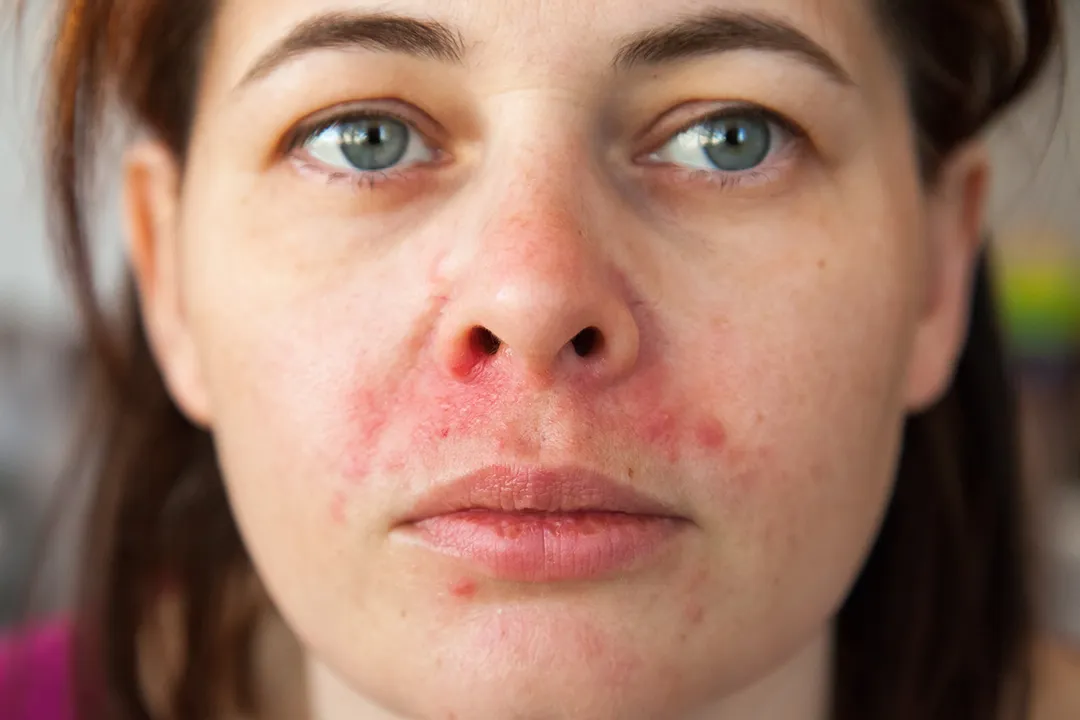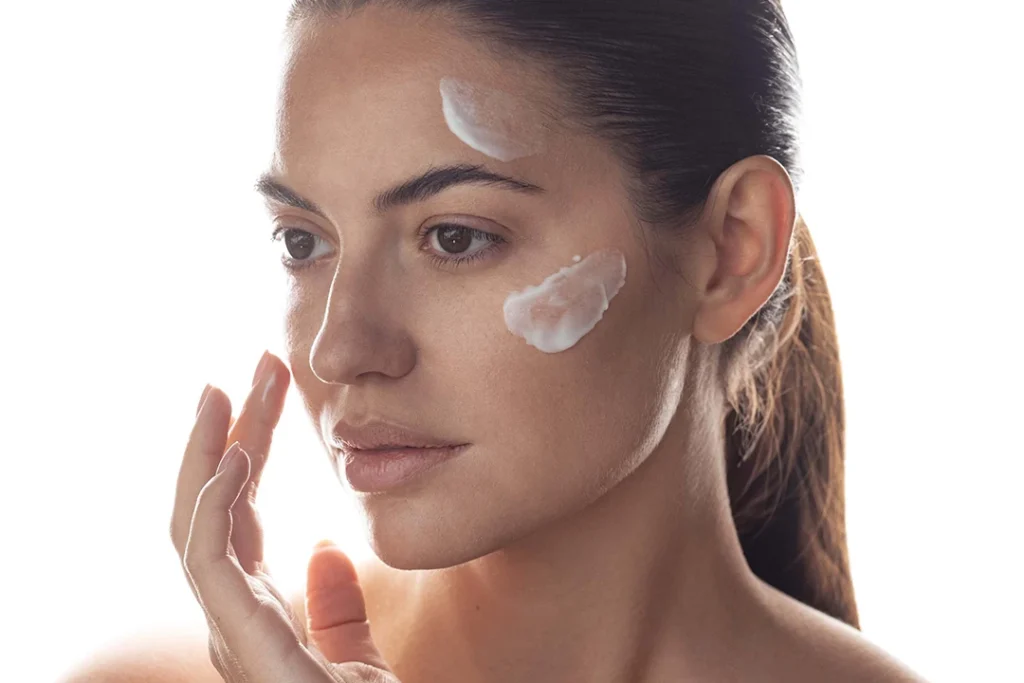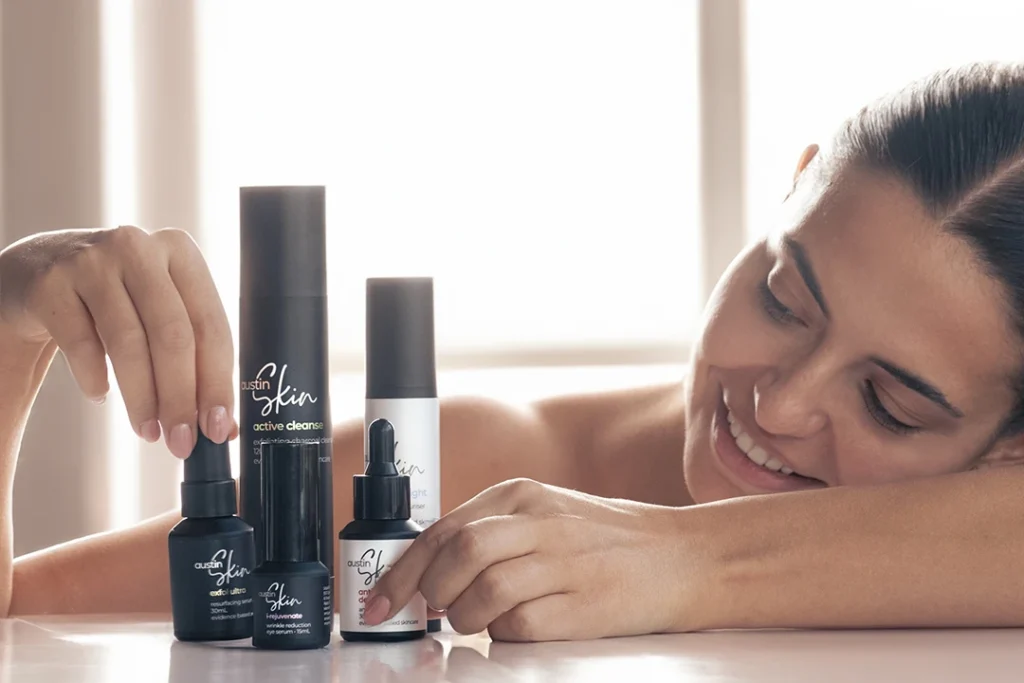Maintaining Healthy Skin pH
Before diving into seborrheic dermatitis specifically, it’s useful to know a bit about skin pH levels in general. pH stands for potential of hydrogen, a measurement that identifies the activity of hydrogen ions in a water-based solution. pH levels are a valuable diagnostic tool for determining whether a substance is alkaline or acidic. An optimal (neutral) pH for skin – somewhere between 4.7 and 5.7 – works with natural sebum and a microbiome of healthy bacteria to help skin function properly while staying hydrated and healthy.
A dramatic shift in pH can disrupt your skin’s protective, yet delicate acid mantle. The acid mantle is a combination of natural lipids and good bacteria. Together they help skin stay properly moisturised, protected, and functioning at optimum levels. When your skin mantle is disturbed, bad bacteria and environmental stressors like pollution can damage skin.
This understanding of skin’s preferred pH makes it easier to know what may be triggering unwanted skin flare-ups. When skin’s pH shifts too far in either direction as the result of the use of highly acidic or alkaline products, it can lead to inflammation, irritation, oiliness, or even eczema and rosacea flare-ups. As a general rule, products that are too acidic cause redness and irritation. While using products that are too alkaline can lead to dryness, tight-feeling skin or seborrheic dermatitis.
Identifying Seborrheic Dermatitis: Signs and Symptoms
The symptoms of seborrheic dermatitis can vary in severity and location. “This is one reason, in addition to skin cancer screening, that makes regular skin checks at Austin Clinic a good idea,” observes Dr Austin. During a skin check, whether at home or at Austin Skin, these body parts should come under scrutiny:
Scalp: Flaky, white or yellowish scales (dandruff), greasy patches, redness, and itching.
Face: Greasy, red, inflamed patches with well-defined borders, especially around the eyebrows, nose, and sides of the nose.
Ears: Red, scaly patches on the outer ear and inner canal.
Chest, back, and groin: Red, scaly patches.
What Causes Seborrheic Dermatitis?
While the exact cause of SD is unknown, several factors are believed to contribute to its development. These include:
Malassezia yeast: A fungus naturally present on the scalp, Malassezia can trigger an inflammatory response in some people, leading to SD.
Genetics: A family history of seborrheic dermatitis increases your risk of developing the condition.
Health problems: People with Parkinson’s disease or HIV/AIDS are more prone to SD.
Stress: Emotional stress can worsen existing SD.
Cold weather: Dry, cold climates can exacerbate symptoms.
Oily skin: Seborrheic dermatitis is more common in people with oily skin.
What to Do If You Think You Have Seborrheic Dermatitis
For stubborn cases, Austin Skin may recommend prescription-strength treatments including:
Topical corticosteroids: Applied as creams or ointments, these medications quickly reduce inflammation and redness. However, long-term use can have side effects, so they’re typically used for short periods during flare-ups.
Topical antifungal medications: Stronger anti-fungal creams or lotions like ciclopirox (1%) may be prescribed for persistent inflammation.
Calcineurin inhibitors: These prescription creams, like tacrolimus (0.1%) or pimecrolimus (1%), suppress the immune system’s response to inflammation, providing relief from itching and scaling.
Broadband intense pulsed light (IPL) therapy can also help clear visible signs of SD on the face. “Patients usually require three to six sessions to see maximum improvement,” reports Dr Austin. Chemical peels with salicylic acid can be valuable in breaking down the thick, top layer of affected skin.
DIY Help for Seborrheic Dermatitis
We are sorry to report that seborrheic dermatitis is a chronic condition, meaning there’s no permanent cure … yet. Scientists are still working towards that goal. Until a cure is found, Austin Clinic patients can turn to various treatment options to help manage symptoms and reduce flare-ups until medical science reaches the next level.
Lifestyle Modifications
Certain lifestyle changes can help manage and reduce the frequency and intensity of flare-ups:
Frequent shampooing: Wash your hair regularly with a medicated shampoo as directed by the product label.
Gentle skincare: Use fragrance-free, gentle cleansers and moisturisers to avoid irritating the skin.
Stress management: Techniques like meditation, yoga, or deep breathing, can help manage stress, which can worsen SD symptoms.
Diet: While no specific diet cures SD, some people find that avoiding trigger foods like dairy, gluten, or alcohol helps alleviate symptoms. It’s recommended to discuss any dietary changes with a healthcare professional. They can diagnose the condition, determine the severity, and recommend the most appropriate treatment plan.
The #1 Thing You Can Do for better Skin
It can be a daunting task to decipher the language of skincare ingredients, including pH levels. Fortunately, you don’t have to do it alone. Ask an expert. “A trained skincare doctor such as those you’ll find at Austin Skin is your best ally in deciphering the word salad of ingredients. Doctors who understand skin can diagnose your condition, determine its severity, and we can then help you create a bespoke skincare program that focuses on your unique needs,” says Dr Austin.
Austin Clinic also offers skin cancer checks, screenings, and treatment so your skin is healthy as well as beautiful. Contact us today for better skin tomorrow.




